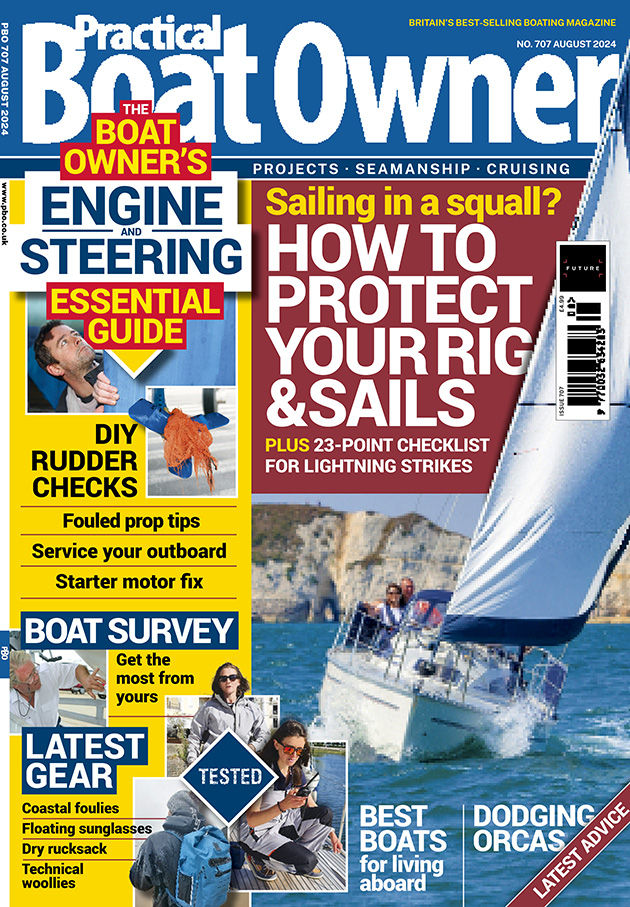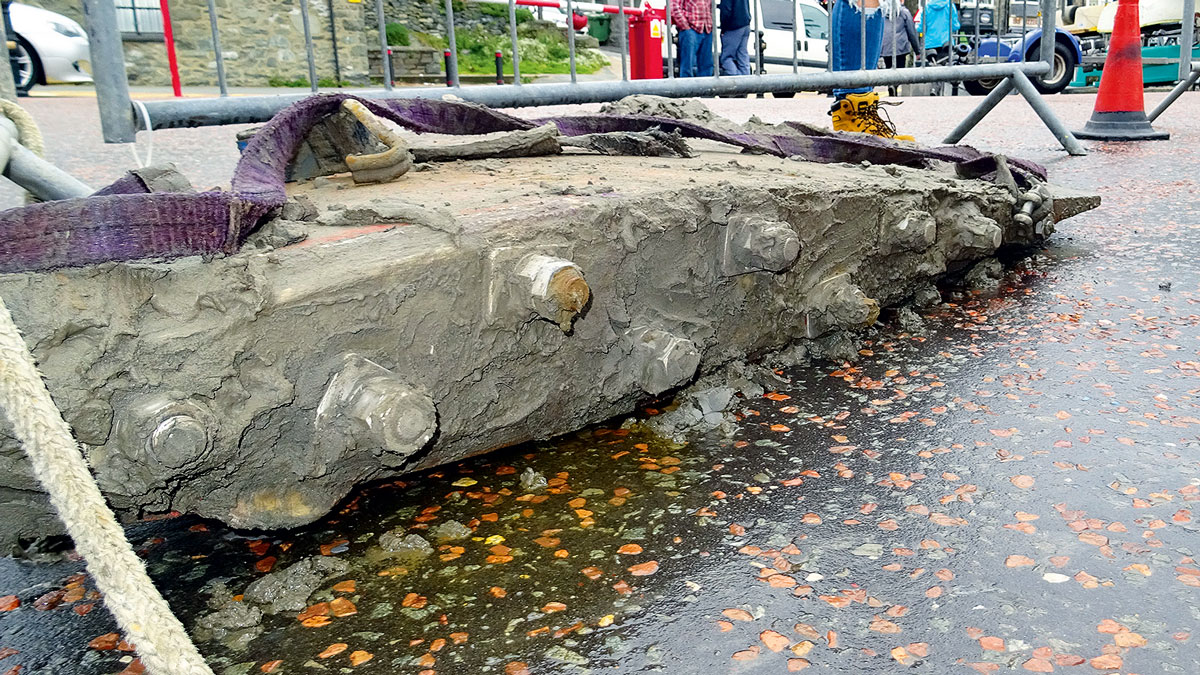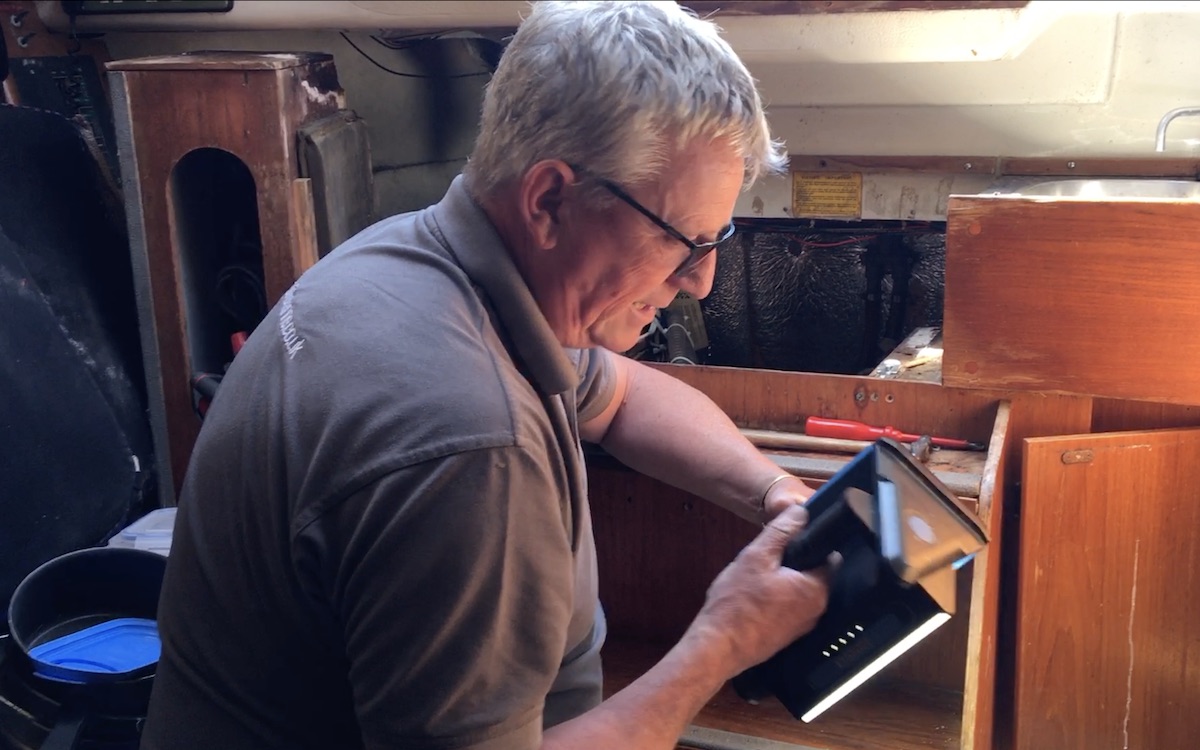Thinking of buying a new boat? A marine survey could save you a lot of heartache and money in the long run, says Ali Wood
You’ve seen your dream boat and the only thing stopping you from sailing it into the sunset (aside from antifouling, engine service, battery check, sail repairs…) is the yacht survey.
Do you really need it? Yes!
“And take off your rose-tinted spectacles,” adds marine surveyor Ben Sutcliffe-Davies who has worked in the industry for 45 years, and surveys yachts, motorboats and narrowboats.

Even new builds require a handover survey
“You might have fallen in love with this boat, but you need to know it’s structurally sound.”
Perhaps you’ve even paid a deposit, but if a yacht survey reveals a good reason to back out of the purchase, now’s the time. Still game? Then get quotes for the required remedial work, or consider whether your DIY skills are up to it, and if necessary reduce your offer.
Choosing a surveyor
“A lot of people ask what sort of qualifications a marine surveyor has,” says Ben. “They think we have a time machine, x-ray vision and a crystal ball to work out what went wrong when they parked the boat on rocks.”
But actually, a marine surveyor doesn’t need formal qualifications, which is why it’s important to choose someone who’s a member of a professional body such as the Yacht Designers and Surveyors Association (YDSA) and British Marine Federation (BMF).

Ben inspects the keel to hull join
As well as pre-purchase surveys, Ben’s remit includes sea trials, damage inspections for boat owners and insurers, osmosis assessments, valuations, witness testimony and refit surveys.
“Even new builds need a handover survey,” explains Ben. “I had a classic example where a temporary shackle had been used and not replaced. Had the boat been handed over like that and gone to sea the owner could have lost the rig!”
A lot of surveyors also get involved with Part 1 registration, which is required for a marine mortgage and proves you own the boat and can spend more than six months outside the UK.
What are the different types of yacht survey?
A surveyor will help you decide whether the boat is right for you, whether that’s a project boat or one you can sail in with the family immediately.
Pre-purchase
A pre-purchase survey is the responsibility of the buyer, not the seller. By all means, ask the seller for an old survey if the copyright allows it, but bear in mind it could have been altered, and of course the boat may have taken a few knocks since then!
Always get a new yacht survey. A pre-purchase or standard condition survey focuses on the condition of the vessel but might not include soft furnishings or cosmetic items that don’t affect the structural integrity.
The YDSA points out that the survey is not ‘a bargaining tool’ but serious defects can be raised when considering an alteration of the price or requesting works be done before purchase.

The boat should be out of the water for the pre-purchase survey
As well as giving brief identification details, a full condition report will outline any defects found.
It will grade recommendations according to how urgent they are, and identify what action is needed, whether this is immediate for safety reasons, to be done at winterisation, or simply cosmetic.
The pre-purchase survey should be sufficient to insure and/or secure finance on a boat.
If you decide against a pre-purchase survey you may still need an insurance survey, so it’s generally worth having a survey done that will cover all eventualities.
Sometimes Ben attends surveys and realises the issues far outweigh the value of the boat.
For example, 10 minutes into surveying a 1975 yacht he noticed both the rudder and keel were offset.
“The owner was lucky not to have lost it,” says Ben. “You’re looking at £6,000 for the keel to be recast and £3,000 for the rudder. We were past the value of the boat already!”
Limited scope
A limited scope survey covers a particular part of the boat, such as machinery, electrical or ancillary equipment.
It may be to check repair work or suspected faults such as deterioration through osmosis or damage following a grounding incident.
“Surveyors are a bit like GPs,” says Ben. “We’re here to flag the problems and identify what’s not right – for example, the rigging, the gas, etc – but then you need to call in the specialist for investigation.”
Many YDSA surveyors have skills and knowledge in different areas so it’s worth checking the YDSA website to find a surveyor to meet your specific needs.
If they can’t help they may recommend a specialist contractor.

These are just some of the worn and dangerous items Ben has found on boats during his surveys
Damage and insurance assessment
In the event of an accident, your insurance company may instruct an independent surveyor to assess the extent of any damage.
When this happens, the insurance company is the client, not you.
Ben deals with lots of insurance claims and reminds boat owners to check the policy carefully when taking out insurance on a new boat.
With a boat fire, for example, if you have fully comprehensive insurance there usually wouldn’t be an issue.
But if you have a third-party policy, fire and wreck removal may not be covered.
Other work
Marine surveyors are also employed as expert witnesses in disputes, to sign-off ongoing new-build or repair work and to help boats meet the ISO standards required by the Recreational Craft Directive (RCD), now called the Recreational Craft Regulations (RCR) in the UK.
Will a surveyor give a valuation?
A valuation is not normally included in a survey, so you should ask your surveyor beforehand if they’re willing to give one.
A professional surveyor will have access to more accurate information than is available publicly and may consult with a broker.
Provided there’s nothing structurally wrong with the boat, Ben finds the valuation often comes within 10% to 15% of the asking price.
However, some boats he surveys are so structurally deficient that the prospective buyer backs out and the owner is forced to consider a disposal fee.
How much does a yacht survey cost?
Typically, a survey for a boat up to 40ft costs between £600 and £1,000, depending on the boat’s location and what’s required.
First, the surveyor will inspect the exterior and interior of the boat while in the yard, paying particular attention to the rig and hull.
Then, once the buyer has received the report, and if they’re keen to proceed with the purchase, the surveyor will follow up with an on-the-water survey.
Some surveyors include both visits in the quote, others might quote an additional £100 to £150 for the test sail.
“Don’t feel you have to stick to a local surveyor,” advises Ben. “Ensure you have one who is registered with the YDSA. Don’t be afraid to ask for proof and also to see a sample report in case you don’t understand what they’ve written, or you don’t like their style of writing.”
How important is a test sail?
“While a test sail will give you a true reflection of how the boat sails it won’t give you an idea of the rudder, keel or hull,” says Ben. “Surveyors aren’t very good at using a hammer under the water.”

A test sail comes after the bulk of the survey has been done in the yard
By far the most important, and lengthiest, part of the survey is the one that takes place out of the water.
However, during a sea trial, the surveyor will pay particular attention to the sails.
What’s involved in a pre-purchase survey?
If the boat is being lifted for a survey, try to leave it a couple of hours to dry before the surveyor arrives.
Hopefully, the boat will already be clean and decluttered (after all, the owner does want to sell it!), but if not, ask them to do this.
Empty lockers and a clean hull will make it easier for the surveyor to identify defects.
When we instructed Ben to survey the PBO Project Boat, a Maxi 84 built in 1978, it had been out of the water for 18 months.

Get quotes for the work ahead. Scraping back to gel coat was a big job on our Maxi 84
On the flip-side, the lockers were full of rainwater and soggy gear, due to the boat being locked in the yard during Covid.
Ben started outside, tapping the hull with a ball pein hammer, and used a moisture meter to test for water trapped inside the laminate, which could be an osmosis risk.
“You can get an idea of where everything is just by listening,” he said. “I’m not smacking it, it’s just a gentle knock.”
Ben concluded the boat was dry, had good symmetry, and ruled out any issues of detachment.
Moving onto the keel, he checked the area where it joined the hull, and then inspected the decks, running and standing rigging and gas locker.
Below decks, he looked at the boat’s internal structure, skin fittings, head, gas oven, sails, batteries, electrics and engine.
Importantly, his portable carbon monoxide detector was used to check for any dangerous leaks.
Though Ben checked over the engine, the batteries were dead so he was unable to start it.
We asked the boatyard to try the engine for us the following day with a new battery, and to our relief, it started first time.
Ben also flagged that the ageing electrics would require a thorough inspection by a marine electrician.
When we did this, the electrician condemned the wiring, and we commissioned a rewire at a cost of several thousand pounds.
Thanks to the yacht survey, we took on Maximus’s restoration knowing the rough valuation and costs involved (or at least some of them… more were to creep in!).
Had we taken on the boat ‘blind’ – even though it was generously gifted to us – we would have been in for a shock.
At least now we had an idea of the boat’s ceiling price, should we later sell it, a list of defects and the tasks ahead of us.
Plus a budget to work within – which of course, we blew!
Yacht survey tips
- Check your surveyor belongs to a professional body, read their reviews and ask for a sample report to get an idea of what to expect
- Clarify whether the cost includes sea trials or if that will cost extra
- The boat should have been out of the water for at least two hours
- Ensure the boat is clean outside and (preferably) inside so that defects are easier to spot
- A yacht survey is the first step in getting to know your potential boat. You may need to follow-up with specialists
- A surveyor can’t see the top of the mast and is not an engine specialist or electrician. They may advise a separate rig, engine and/or electrics check
- Empty the lockers and clear the boat of clutter so the surveyor can easily see what they’re doing
- If your surveyor allows, photograph and film the process. Ask questions but be aware they may charge you extra if this slows them down
- You may have questions for the boat owner, but save them until after the survey as the surveyor will have more
- The surveyor may request evidence from the boat owner of previous work done such as the last rig replacement
- Before purchasing the boat, get quotes for rectifying the issues raised in the survey. For example, a rewire, new engine, deck or rig may cost more than the value of the boat
Continues below…
Osmosis on a boat: will it cause my vessel to sink?
Katy Stickland talks to surveyor Ben Sutcliffe-Davies about why osmosis can be an indicator of high moisture content in fibreglass
Project Boat survey revealed – old seacocks, dangerous gas, leaks and more…
A boat survey is really important for anyone buying – or even acquiring – a secondhand boat. Last month we…
Maximus Boat Survey Part 1 – hull and decks
Thinking of having a boat survey? If so, take a look at this video of marine surveyor Ben Sutcliffe-Davies as…
The PBO Project boat survey – and why every new boat owner should have one
If you’re thinking of buying a new boat – or maybe you’ve inherited one or are renovating a wreck –…
Did you enjoy reading this article?

A subscription to Practical Boat Owner magazine costs around 40% less than the cover price.
Print and digital editions are available through Magazines Direct – where you can also find the latest deals.
PBO is packed with information to help you get the most from boat ownership – whether sail or power.
-
-
-
- Take your DIY skills to the next level with trusted advice on boat maintenance and repairs
- Impartial in-depth gear reviews
- Practical cruising tips for making the most of your time afloat
-
-
Follow us on Facebook, Instagram, TikTok and Twitter








